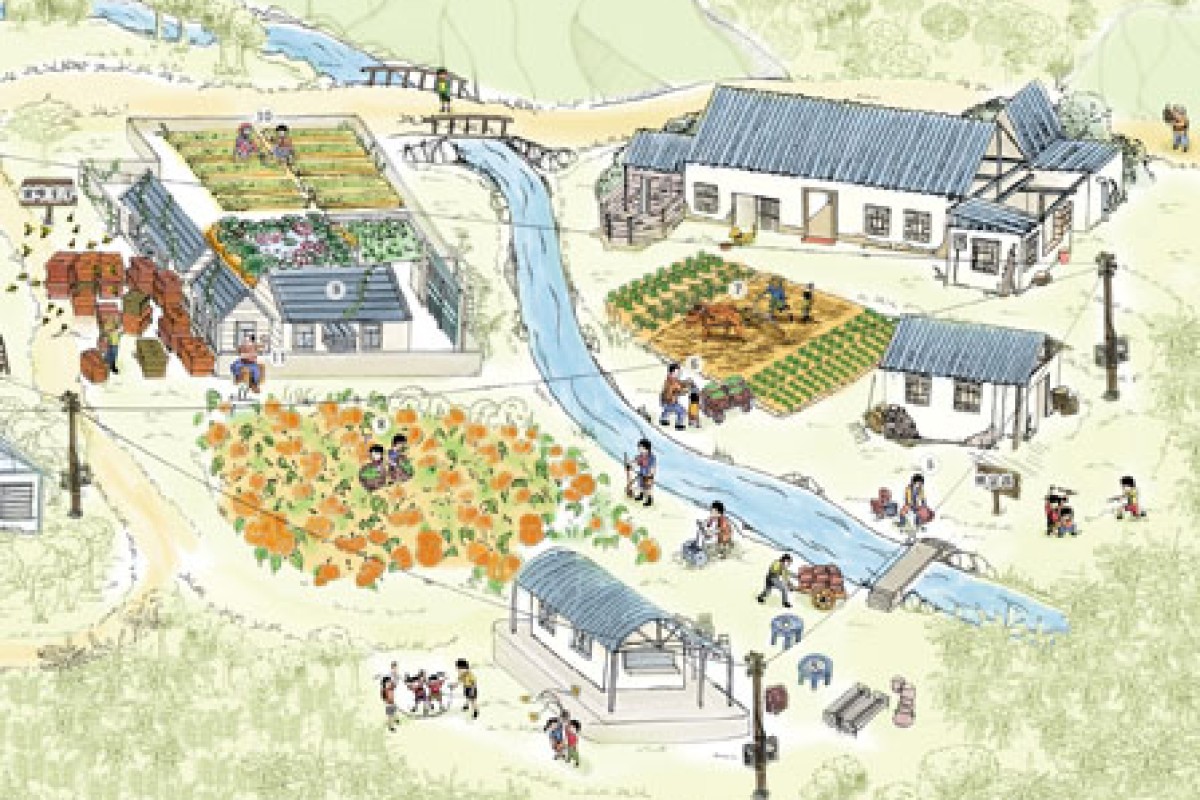
Yet the memory of their village lives on - in a six-metre-wide painting called the Riverside Scene of Local Agriculture. The panoramic work, created by Hong Kong Polytechnic University students, showcases the community's life in its heyday.
The 30-strong team of part-time design students came to identify with the embattled villagers during a tense period last December. At issue back then was compensation for villagers.
Yet Michael Yiu Wai-hung, a participant in the project, thinks villagers' anger was not motivated by financial considerations. "What they refused to give up was a close-knit community, their industriously built homes and farmlands," he says.
The students went door to door to map out the village. They also interviewed the last 18 families that stood their ground till the end. Their project aimed to recapture the village's life in its prime between the 1950s and 1970s in a panoramic drawing fashioned after the famous Riverside Scene at the Qingming Festival.
Choi Yuen Tsuen village's story began six decades ago when new immigrants began turning the barren land into lush gardens and groves of tulips, cabbages and bananas. Some villagers raised pigs, others kept bees. The community became like a big family.
Hui Pok-leung, originally from Indonesia, was one of the early residents. He once bred 3,000 pigeons for sale to restaurants.
Pang Kit-sze, who interviewed Hui, points to a part of the painting depicting a younger Hui soaked to the bone while covering up the bird cages during a typhoon. "He tended to the birds all year round without rest and he felt proud of his hard work," Pang says.
In a mishmash of time and space, Hui reappears in another scene, building a new wing to his house from brick and planting a Kedongdong tree in his backyard.
The drawing took the student team six more months than expected. "Every interviewer came back with a different design, perspective and dimension," Yiu says. "So we had to redraw everything house by house, character by character."
When the painting was finally unveiled, several farmers broke down in tears to see their lives' labours immortalised in the painting. "They can no longer see the village as it once was except in the painting," Pang says. "Sadly, their story became history."
Yiu says he once asked the farmers about the hardships of farming. The farmers replied that working out in the open air was much more preferable to being cooped up in an office for the whole day.
"They told me they savoured every moment out there in their fields," he says.
The drawing will be on display at PolyU's SD Gallery until July 15.
